Chapter 1 of the Knee Ability Zero Picture-Book
Intro and Chapter 1 of the Knee Ability Zero Picture-Book
INTRO
I can still remember being 4 years old and telling my best friend I was going to save up for a Michael Jordan rookie card. I worked odd jobs, saved every penny, and at age 6 I did it: I bought a Michael Jordan rookie card for one thousand dollars. I had no interest in toys: just Jordan.
First thing after waking up each day, I raced to the couch to turn on the TV, but not to watch cartoons...
(From the 1990 video "NBA Superstars")
An F-16 Fighting Falcon appears on the screen.
Michael Jordan enters the tunnel into the arena.
The F-16 approaches the runway, then Jordan steps onto the court.
The F-16 begins accelerating for takeoff, and Jordan begins dribbling down the court.
The F-16 gets faster. Jordan gets faster! F-16 - Jordan! Back and forth they go, ‘til the F-16 lifts off and Jordan soars into the air for a dunk!
Berlin's "Take My Breath Away" begins to play, and slow motion highlights of Michael Jordan ensue.
Many hours a day I practiced these dunks on my Little Tike hoop in the garage. By age 9 I was waking up at 5 a.m. to do vertical jump programs before school. Thousands of nights I dreamed of dunking like Michael Jordan. Not once did I dream of lying half-naked on an operating table as doctors used markers to draw where they were going to cut me open.
Chronic knee pain secretly dominated my life starting at age 12. I remember during a fire drill at school being worried that if a real fire broke out, I'd be the last one out. Unless I was warmed up, I couldn't even run, and I had to go up and down stairs very slowly to avoid the pain.
By 14 it was not so secret: My teammates and coaches nicknamed me "Old Man" because my knees were so stiff. I finished high school with scars on my knee, not even close to dunking a basketball, and with no college coaches interested in giving me a scholarship.
I recall the moment it hit home that my dream of being a basketball player had not succeeded. I had a real decision to make: What would I do with my life now? Would I choose a logical career and forget basketball, or would I devote my existence to figuring out how to bulletproof my knees?
I chose the latter. I began painting walls during the day to make money while I studied and experimented with how to fix my knees.
A year went by with no results. In fact, I was certain I needed another surgery when a spark of truth finally presented itself...
"The athlete whose knees can go farthest and strongest over his or her toes is the most protected."
Everything I had been taught up to this point by dozens of trainers and physical therapists was very clear: NO KNEES OVER TOES - but when I read this statement, I immediately knew it was true.
I scrambled on the internet looking for examples of this, and the first video footage I found was from Australian Strength Coach Keegan Smith, a student of Charles Poliquin. I became a student of Charles myself, and learned enough to get my knees to the point where I could play basketball with manageable pain.
At age 21, I beat the odds and signed a college basketball scholarship with an up-and-coming coach named Jeremy Shulman. He was the only coach who gave me a shot, and I repaid him by becoming the starting point guard for his team and helping him win two straight conference championships in one of the strongest community college divisions in the nation.
At age 23, I received a full-ride scholarship offer from Boston University. From unrecruited in high school to Division 1 scholarship, local kids back home were reaching out to have me train them whenever I was in town. No one had ever heard of such a story, and people wanted to know how I had pulled it off.
Little did I know, an NCAA rule allowed only 5 years of eligibility to play sports after graduating high school, and my time was up. I assembled all my medical records, and Boston University appealed the ruling, but once again I was denied. It was suggested that I get a lawyer and fight the decision in time for the start of the season, but I knew it was meant to be: My purpose was to follow the clues I learned from Charles Poliquin, and see what I could achieve with knees over toes.
Fast forward to today. At 30 years old I have the abilities I always dreamed of: I can DUNK, and not just a little bit. I've now trained many NBA players and it is still surreal for me, as a 6'1 guy who grew up unable to grab the rim, to teach 6'6"+ NBA players how to improve their dunks, and physically demonstrating the precise next dunk which would improve their game but which they cannot do yet, thanks to the system of knee training you are about to learn.
More importantly, the following formula puts the longevity of my knees in my hands, so now I’m looking forward to a very different future than my genetics and injury history indicated. My son turned 1 year old in September, and I’ve got a new dream: To still be able to dunk when he can dunk, too. Knee Ability gives me the tools to preserve my knees so I can be dunking in my 40s and help my son dunk despite genetics that wouldn’t naturally get him there. The ultimate thrill is no longer dunking with studs, but having my son dunk with me.
And here’s how that’s going to happen.
KNEE ABILITY ZERO
Knee Ability Zero is a program which requires zero weights, zero equipment, and zero special abilities to start. You can read, study the pictures, and follow right along! I will teach you how to perform each exercise with written explanations and visual demonstrations. You will do the exercise, then come back to your book and read the "Why" behind the exercise.
STEP 1: THE TIBIALIS RAISE
Your tibialis anterior muscle is on the front of your lower leg. It acts both to flex your toes up, and to decelerate your foot when you walk, stop running, jump, etc., which you will see examples of when you get to the "Why" section for this exercise:
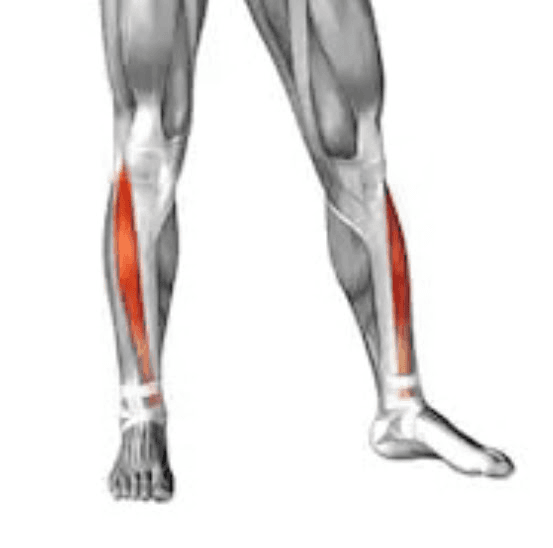
HOW
Find a wall and make sure you have safe footing (no socks or slippery floor).
Put your butt against the wall, and stand out a comfortable distance, with your legs straight:

Now, without letting your knees bend, flex your toes up and hold the top position for 2 seconds before lowering back down:

To make the exercise easier, simply stand closer to the wall:
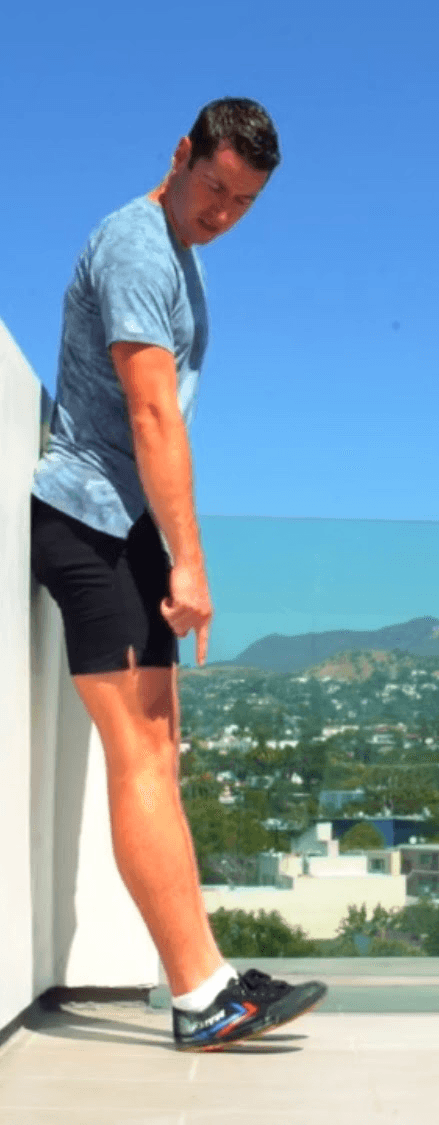
To make the exercise harder, stand farther from the wall:
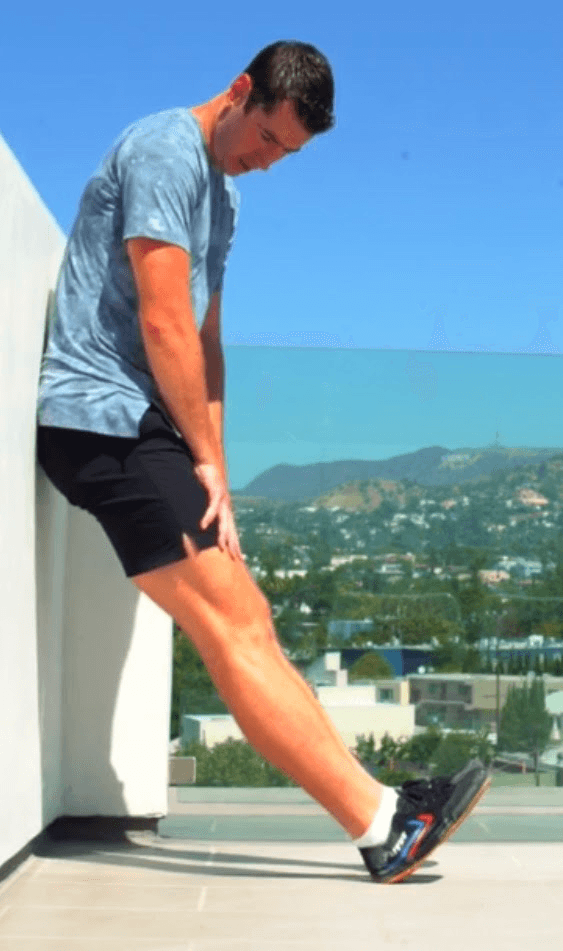
Perform 25 consecutive reps, pausing 2 seconds at the top of each rep, and 2 seconds at the bottom of each rep, monitoring difficulty as you go. You may need to stand closer to the wall as your muscles burn out, or farther from the wall if you are feeling no challenge.
If you feel a significant burn by the end of the 25 reps, and no knee pain:
YOU JUST PUT MONEY IN THE BANK FOR YOUR BODY!
This is the beauty of Knee Ability: it is a program of pain-free ability, where our goal is never a win/lose situation, but rather degrees of winning only. Let's look at why that is...
WHY
You use your tibialis with every step you take:
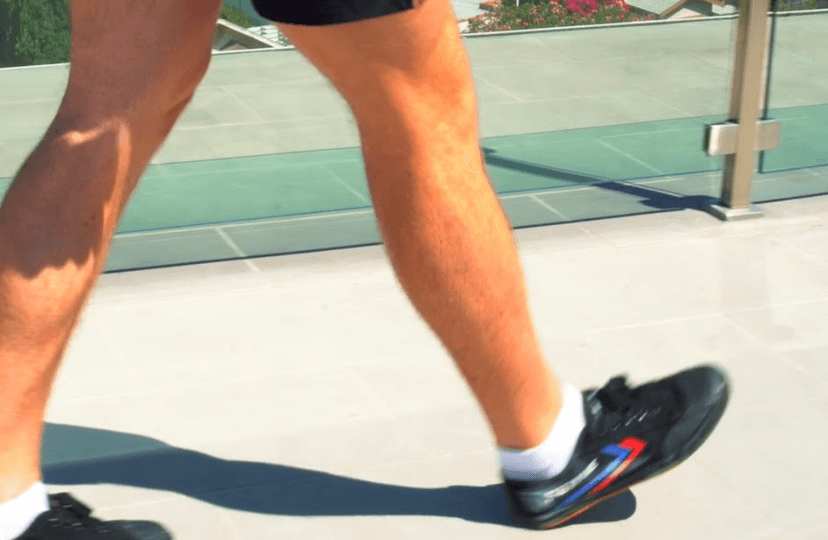
When you play sports and decelerate or jump, you may put thousands of pounds of force into this muscle, and whatever force is not handled by the tibialis goes directly up to your knee:

Look familiar? Yet no study has ever been done on strengthening this muscle.
The tibialis is the decelerator of your foot, and your foot is your first point of contact, thus:
YOUR TIBIALIS IS YOUR FIRST LINE OF DEFENSE AGAINST BOTH CHRONIC AND ACUTE LOWER BODY INJURIES.
No matter how great I got at the direct knee exercises you will learn as you continue reading, I still suffered from foot pain, Achilles pain, nasty shin splints, and "mystery" lower knee pains.
I recall that at my worst, my foot and lower leg pains were so bad, I would wake up in the morning and wonder, "Will today be a walking-to-the-bathroom morning, or a crawl-to-the-bathroom morning?" Sometimes the pain was too great to bear the load on my feet.
You see, coming from such weak knees, and then jacking up my knee strength so dramatically, I was capable of producing far more force than my lower leg muscles had handled throughout my life. By reverse engineering this situation, I soon realized the tibialis was the missing link in my regimen, and I was overjoyed when I found that transforming this muscle took my knees to the next level of ability!
For example, prior to the Tibialis Raise, I had achieved the ability to dunk, but only when I jumped off two feet. When I did a one-foot jump, I got nowhere near as high, and was prone to debilitating foot, shin, and knee pains, which prevented me from trying. Not long after making the Tibialis Raise a standard part of Knee Ability, I was dunking off one foot with ease. All these lower extremity pains disappeared - and never came back.
If you look at your body logically, the Tibialis Raise would be the first place to start, regardless of what physical issues you may be having.
Last tip: Make sure you realize your shoes' heel height affects the difficulty of the exercise: the higher the heel, the harder it is, and the lower the heel, the easier it is.
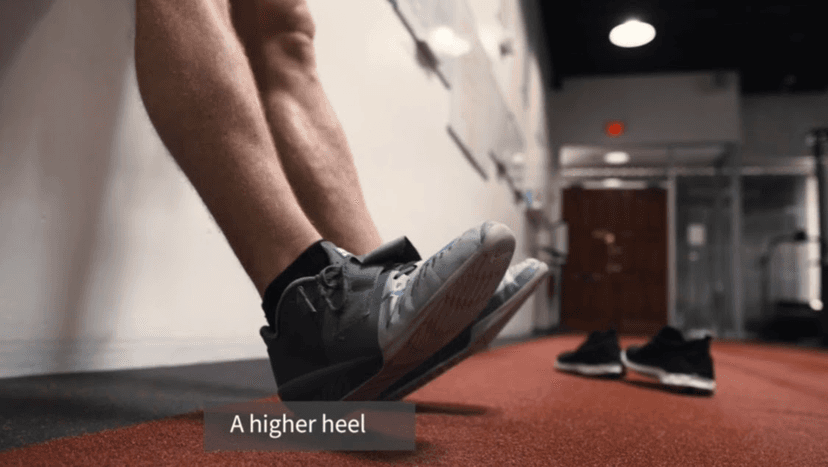
Sign up for free knowledge
We send out new articles weekly.